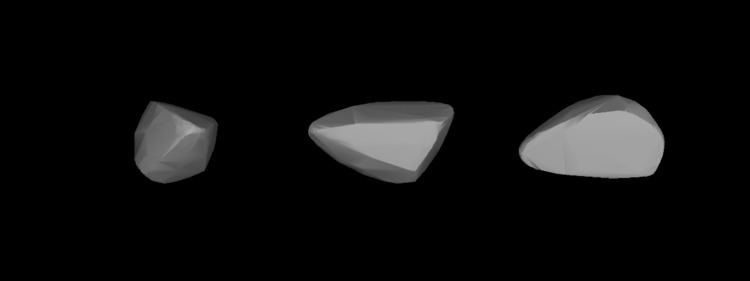Discovered by K. Reinmuth MPC designation 1704 Wachmann Discovered 7 March 1924 Orbits Sun Asteroid group Asteroid belt | Discovery date 7 March 1924 Minor planet category main-belt · (inner) Absolute magnitude 13.3 Discoverer Karl Wilhelm Reinmuth | |
 | ||
Named after Arno Wachmann(astronomer) Alternative names A924 EE · 1947 CE1957 BJ Discovery site Landessternwarte Heidelberg-Königstuhl Similar 1862 Apollo, Sun, 1419 Danzig, 1056 Azalea, 1111 Reinmuthia | ||
1704 Wachmann, provisional designation A924 EE, is a stony asteroid from the inner regions of the asteroid belt, approximately 7 kilometers in diameter. It was discovered by German astronomer Karl Reinmuth at Heidelberg Observatory on 7 March 1924.
The S-type asteroid orbits the Sun at a distance of 2.0–2.4 AU once every 3 years and 4 months (1,211 days). Its orbit has an eccentricity of 0.09 and an inclination of 1° with respect to the ecliptic. No precoveries were taken and the asteroid's observation arc begins 3 days after its official discovery date.
In April 2007, a rotational light-curve for this asteroid was obtained at the U.S. Sandia View Observatory in New Mexico (H03). The light-curve gave a well-defined rotation period of 7000331400000000000♠3.314±0.001 hours with a brightness variation of 0.40 in magnitude (U=3).
According to the survey carried out by the NEOWISE mission of NASA's Wide-field Infrared Survey Explorer, the asteroid measures 6.6 and 6.9 kilometers in diameter, and its surface has an albedo of 0.177 and 0.193, respectively, while the Collaborative Asteroid Lightcurve Link assumes a standard albedo for stony asteroids of 0.20 and calculates a diameter of 7.8 kilometers, based on an absolute magnitude of 12.9.
The minor planet was named for Arno Wachmann (1902–1990), long-time astronomer at the Bergedorf Observatory in Hamburg, discoverer of minor planets and comets, and observer of variable and binary stars. He is best known for the co-discovery of the three "Schwassmann–Wachmann" comets, 29P, 31P and 73P. Naming citation was published before November 1977 (M.P.C. 3933).
